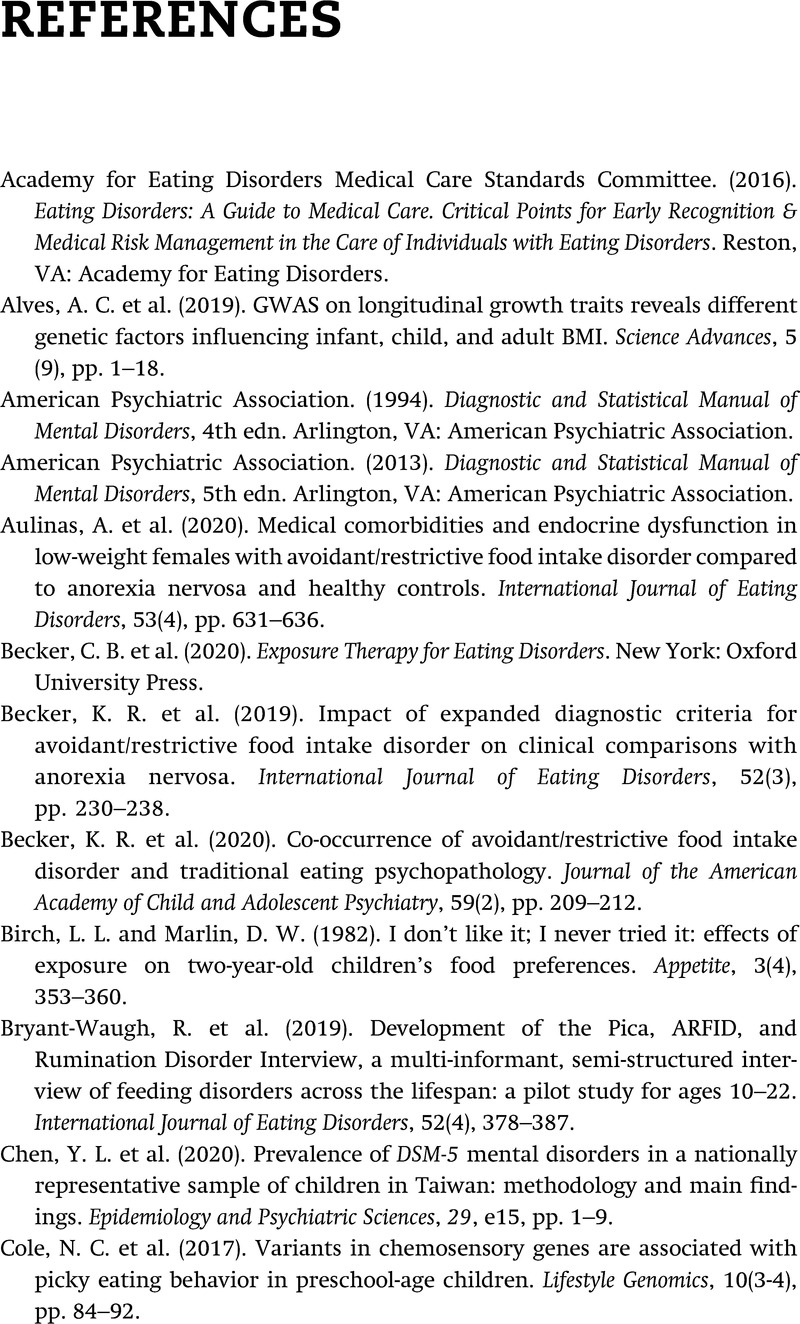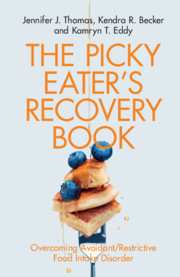Book contents
- The Picky Eater’s Recovery Book
- The Picky Eater’s Recovery Book
- Copyright page
- Dedication
- Table of Contents
- Reviews
- Preface
- Acknowledgments
- Section I All About ARFID
- Section II Getting Started (Stages 1 and 2)
- Section III Tackling What Keeps Your ARFID Going (Stage 3)
- Section IV Moving Forward (Stage 4)
- References
- Index
- References
References
Published online by Cambridge University Press: 03 September 2021
- The Picky Eater’s Recovery Book
- The Picky Eater’s Recovery Book
- Copyright page
- Dedication
- Table of Contents
- Reviews
- Preface
- Acknowledgments
- Section I All About ARFID
- Section II Getting Started (Stages 1 and 2)
- Section III Tackling What Keeps Your ARFID Going (Stage 3)
- Section IV Moving Forward (Stage 4)
- References
- Index
- References
Summary

- Type
- Chapter
- Information
- The Picky Eater's Recovery BookOvercoming Avoidant/Restrictive Food Intake Disorder, pp. 251 - 254Publisher: Cambridge University PressPrint publication year: 2021

